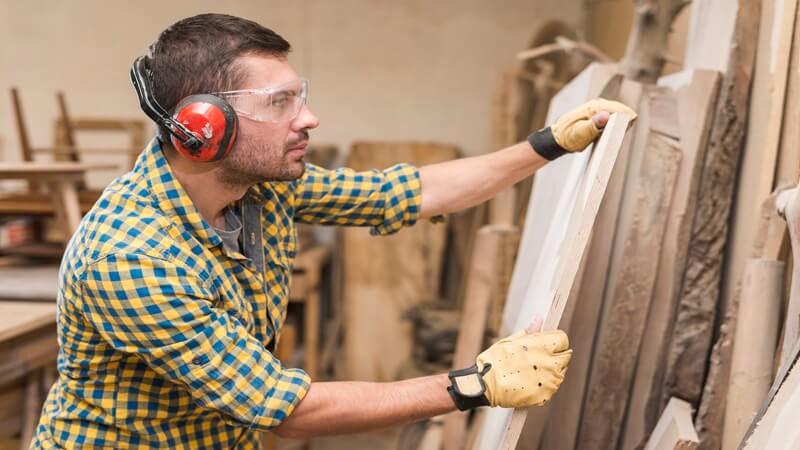When it comes to modern construction, furniture making, and interior fit-outs, the choice of materials can significantly impact quality, cost, and long-term performance. Two of the most commonly used wood-based products are plywood and particle board. Each has unique strengths, and deciding between them often depends on the project type, budget, and durability requirements.
As 2025 approaches, advancements in manufacturing and sustainability are shaping how builders, designers, and homeowners select materials. This guide compares plywood and particle board in detail, helping you decide which option best suits your needs.
Understanding Plywood
Plywood is a type of engineered wood made by gluing together multiple layers (or “plies”) of thin veneer sheets. Each layer is placed at right angles to the next, giving plywood its strength and stability.
Key Advantages of Plywood
- Durability: With cross-grain construction, plywood resists warping and splitting.
- Versatility: Suitable for furniture, cabinetry, flooring, and structural applications.
- Moisture resistance: Higher-grade plywood can withstand humid conditions better than particle board.
- Aesthetic appeal: Natural wood grain makes it visually appealing for exposed surfaces.
For anyone considering plywood for large or small projects, a detailed plywood distributors guide can provide valuable insights into quality grades, finishes, and sourcing options.
Understanding Particle Board
Particle board, sometimes called chipboard, is made from compressed wood chips, sawdust, and resin. It’s often used in budget-friendly furniture, shelving, and interior construction projects.
Key Advantages of Particle Board
- Cost-effective: More affordable than plywood, making it ideal for budget-conscious projects.
- Smooth surface: Easy to laminate or paint, providing flexibility in finishes.
- Lightweight: Easier to handle and install compared to denser materials.
- Eco-friendly potential: Utilises wood by-products, reducing waste.
For further details on this material, a dedicated particle board guide helps explain grades, uses, and best practices for application.
Plywood vs Particle Board: The Core Differences
Although both materials serve important purposes, they differ in performance, aesthetics, and cost.
1. Strength and Durability
- Plywood: Stronger and more durable due to its layered construction, making it suitable for structural use and heavy furniture.
- Particle Board: Less strong and more prone to sagging under heavy loads. Best used for lightweight applications like shelving or decorative furniture.
2. Moisture Resistance
- Plywood: Offers superior resistance to moisture and humidity. Marine-grade plywood is particularly effective in kitchens and bathrooms.
- Particle Board: Vulnerable to swelling and damage when exposed to water, unless sealed with laminates.
3. Aesthetic Quality
- Plywood: Natural wood veneers provide a premium look that can be polished or stained.
- Particle Board: Typically requires laminates or veneers to enhance its appearance.
4. Cost
- Plywood: More expensive, but its durability justifies the higher price for long-term projects.
- Particle Board: Budget-friendly, making it a popular choice for low-cost furniture.
5. Sustainability
- Plywood: Can be sourced from sustainably managed forests, but manufacturing requires more energy.
- Particle Board: Utilises waste materials from the wood industry, contributing to resource efficiency.
Where Plywood Works Best
Plywood is ideal for:
- Structural elements in construction.
- Furniture that must withstand heavy use, such as wardrobes and beds.
- Areas exposed to moisture, including kitchens and bathrooms.
- Projects requiring a natural, polished finish.
Where Particle Board Works Best
Particle board is suitable for:
- Affordable furniture such as desks, shelves, and storage units.
- Interior applications where moisture is minimal.
- Projects requiring smooth surfaces for laminates or paint.
- Temporary structures or low-cost renovations.
Trends Shaping Wood-Based Materials in 2025
The wood products industry is evolving, with innovation and sustainability driving change:
- Eco-certifications: More consumers and businesses are demanding responsibly sourced materials.
- Advanced laminates: Improved coatings and finishes are making particle board more durable and attractive.
- Hybrid solutions: Combining plywood cores with particle board panels to balance strength and cost.
- Digital customisation: CNC machining and design software are making both materials more adaptable to bespoke projects.
Choosing Between Plywood and Particle Board
To decide which material is right for your project, consider:
- Budget: Particle board is cheaper, but plywood offers longer-term value.
- Durability needs: Heavy use and moisture-prone areas demand plywood.
- Design goals: If aesthetics are critical, plywood provides a natural wood grain finish.
- Project type: Lightweight furniture may benefit from particle board, while structural projects require plywood.
In many cases, combining the two materials offers the best solution—for example, using plywood for load-bearing components and particle board for non-structural surfaces.
Common Mistakes to Avoid
When working with these materials, avoid these pitfalls:
- Using particle board in wet areas without proper sealing.
- Overloading particle board shelves beyond weight limits.
- Cutting corners on plywood grades, which can affect durability.
- Ignoring proper finishing, which extends the lifespan of both materials.
Conclusion
The choice between plywood and particle board depends on your priorities. Plywood excels in durability, strength, and aesthetics, making it ideal for long-term investments. Particle board, on the other hand, is budget-friendly, lightweight, and versatile when finished correctly.
As 2025 brings greater focus on sustainability and innovation, understanding how each material performs in different contexts is essential. Whether you rely on a plywood distributors guide for sourcing premium sheets or a particle board guide for budget-friendly options, the right choice will ensure your projects are practical, cost-effective, and built to last.
By weighing durability, cost, and design goals, you can confidently choose the material that aligns with your vision—and avoid costly mistakes down the line.
